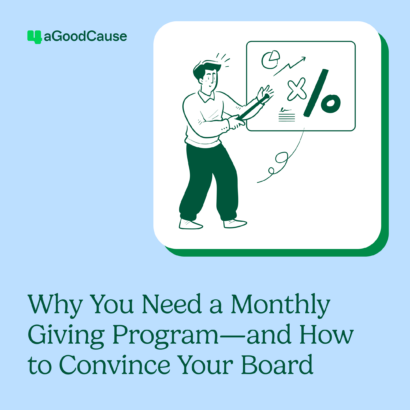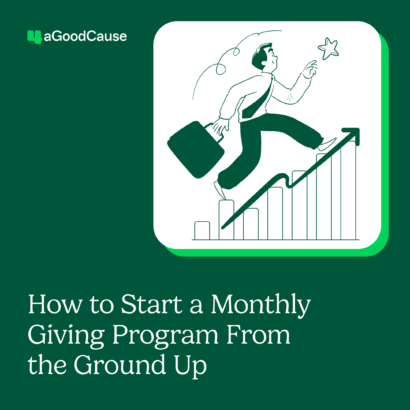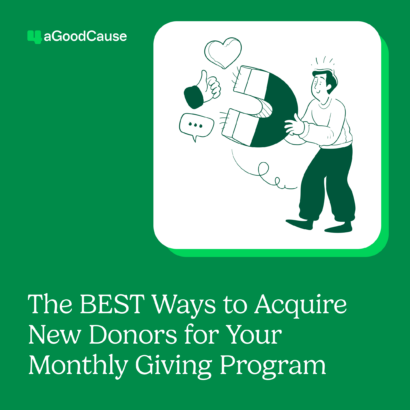A landing page plays a prominent role in capturing registrations, donations, visibility and gaining credibility for your event. Your landing page can be the first thing potential attendees or donors see about your event or campaign. The primary goal is to convert the visitors—into attendees, volunteers or donors. Your landing pages should tell a story and quickly showcase the benefits of being involved with your good cause. To do that, concentrate on the following five areas.
As a follow-up to our landing page tips for before, during and after your event, here are five areas of concentration to ensure your event landing page is set up for the highest performance:
1. Share event details and create trust
Your event landing page should show impact upon first visit but be very easy to find key event information—the who, what, where, when and why. To break it down:
Who is hosting the event?
Though your landing pages are many times tied into your website (thus making it easier to understand who is hosting the event) it may not always be clear. And, if you are hosting a P2P giving event, those individual event or donation landing pages may also not readily showcase the ‘who’ in this scenario. Ensure that your landing pages have a section that describes you/your organization as the host of the event.
What is the event about/what will you do?
This is an important area of the landing page to describe what attendees can expect from your event. Is it a run? A walk? A trivia night? Should they dress to impress or keep it casual? Make the ‘what’ fun and inviting to entice more attendee sign-ups.
Where and when is the event happening?
Providing information as to where and when the event is taking place early on is essential. Are you hosting the event in person? At a venue off-site? Online? Are there specific check-in or schedule parameters to include for your attendees?
Why should they attend?
Your why should be wrapped into your mission, focus and impact statements. What will event registrations bring to your nonprofit? How can their participation in this event help your cause? Why is your fundraising event different from others like it?
2. Utilize strong call-to-action buttons: Register, donate or both!
The top measurement of success for your landing page? Conversions. This is the percentage of people who viewed your landing page and took an action while on the page. And if your CTA (call-to-action) buttons are hidden, your chance of converting attendees or donors drops.
Don’t wait until you’ve explained everything on your landing page and then add your registration or donate button at the bottom. Provide this option throughout the landing page such as:
- At the top of the page in a stand-out color
- Mid-page near a heart-warming story of impact
- Near the bottom of the page with quippy text, “don’t leave before signing up!” or “we noticed you’ve landed at the bottom of our page, nothing left to do now but register!”
For those who may be interested in your events or cause but can’t make the day and time work, provide a donate-only option.
3. Add event hashtags
Hashtags are another fun and creative way to get others involved in sharing information about your event or campaign. Decide on a hashtag for your event, give it a prominent spot on your landing page, use it on all your posts related to the event and encourage others to do the same. You can keep tabs on these hashtags and use them as part of your social media listening to then have engaging conversations and share content that others post using that same hashtag. Don’t forget to share your landing page URL when doing so!
4. Optimize your landing page for mobile
Over 50% of web traffic comes from mobile devices. Ensuring that your landing page is mobile-optimized is crucial. Create an easy-to-navigate and mobile-friendly landing page to eliminate user frustration, no matter what type of device they use. This is especially important for the sign-up, donation or registration form on the landing page.
5. Be crystal clear with contact info
While you do your best to make sure you have a top-performing event landing page, inevitably, some users will have questions. It’s important to provide easy-to-find contact information so that if there are any problems while visitors are accessing your site, they can reach out. Another idea is to have a section of FAQs either as a sidebar, on the bottom of your landing page or linked out to another area of your website, where users can go to find answers to common questions about your event.
Before you push your landing page live, have someone from outside your organization do a peer review. Without telling them anything about your event, provide them a link to the landing page and get their honest feedback—was it easy to navigate? Is it clear who we are and what the event is about? Did you come across any questions as you read through the page?
Assume that visitors who visit your landing pages are coming in with zero background or information about your event. You have limited space to tell them about yourself and the amazing organization you represent – concentrate on the top five areas above and tweak as you get feedback along the way.



